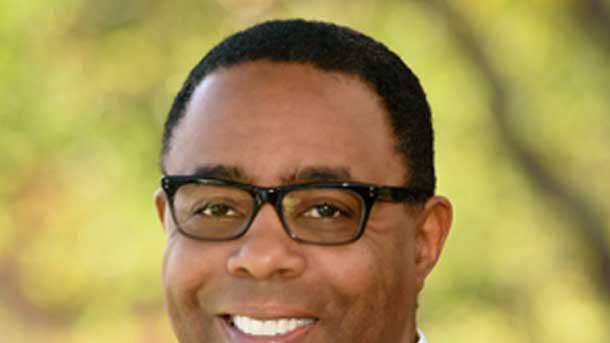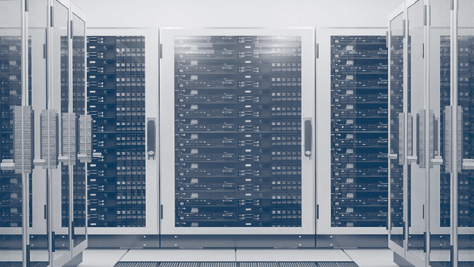Aryaka’s SASE Strategy And Why Gartner’s Wan Edge Infrastructure Report Is ‘Old School’
Aryaka’s CEO and chief marketing and product officer talked about SD-WAN’s evolution to SASE, how COVID-19 shaped its product development efforts, and why the company wasn’t featured in Gartner’s 2020 Magic Quadrant for WAN Edge Infrastructure report.
Networking Through Change
Aryaka had one of its best years amid a global pandemic. That’s because COVID-19 has changed networking architecture requirements -- in some cases, rendered them obsolete -- and that trend isn’t changing anytime soon.
The San Mateo, Calif.-based SD-WAN specialist spent the last year empowering enterprises -- through their trusted solution providers -- with hybrid, flexible networking models that incorporate SD-WAN and security in a secure access service edge (SASE) approach. The work-from-home model is only creating more demand for safe and secure networking and cloud-based solutions that can handle remote users. As a result, Aryaka is considered one of the fastest-growing private companies in the U.S.
Aryaka’s CEO Matt Carter and Shashi Kiran, the firm’s chief marketing and product officer, caught up with CRN about SD-WAN’s transition to SASE, how enterprises are managing change through networking, and why the company didn’t land on Gartner’s 2020 Magic Quadrant for WAN Edge Infrastructure report.
Here’s what Aryaka’s top executives had to say.

Are you seeing the transition from SD-WAN to SASE as a result of the COVID-19 pandemic?
Carter (pictured): We’ve felt all along that it was moving in that direction, but what the pandemic has done is accelerated the timeline a little bit faster than we thought. But we’ve always felt like the market was moving more towards networking plus security as a bundled or integrated offering. It’s just that we thought it would be another two to three years before we’d see mass adoption, but that’s accelerated now. The pandemic was an enabler that accelerated the eventual mass adoption of SASE.

Has the pandemic influence Aryaka’s product development?
Carter: It honestly did help accelerate our product development efforts. We made sure we were offering the types and features and functionalities our customers needed to be able to have the kind of secure access for their employees who are working from home. Last year was one of the best years in Aryaka’s history and we continue to see tremendous growth going forward as companies are coming to a place where they realize we are living in a bifurcated world. They are going to need to work from home and that fits perfectly well for us because our architecture is flexible enough to accommodate both ends of that spectrum.
Kiran: We introduced a new private access offering which allows our customers to have a hybrid workplace environment, which means they can provide flexibility for their employees, while giving consistency of application performance. That was a key announcement we made, and even ahead of the announcement, we had 20,000 users license sold. Two quarters prior to that, we announced managed firewall and security offerings with the likes of Check Point and Palo Alto Networks. We virtualized those firewalls and brought them onboard with our own service edge boxes. Customers were already starting to get interested in that. They see this converged footprint on the edge where they don’t need two different appliances and it can be delivered as a service. Then, we tacked on a private access offering on top of that, [which] really opened up this gateway for the hybrid workplace environment on the client side with a branch office location and then in the cloud as well. We are seeing a lot of traction here.

Why didn’t Aryaka make this year’s Magic Quadrant for WAN Edge Infrastructure?
Kiran: Their criteria of the Magic Quadrant, [The WAN Edge Infrastructure report]; they have focused on box vendors only, and then they have a Magic Quadrant for telecom and service providers -- the Network as a Service Magic Quadrant. We, incidentally, do work across both because we integrate those two motions. We have our own box, but we deliver it as part of a service. We don’t sell our boxes, but Gartner wanted box sales.
We also have a different, cloud-centric architecture than those that focus on the box. The criteria of the Magic Quadrant were different than our own vision and architecture. That caused confusion with customers because they expected us to have box pricing features in the way that traditional box vendors do. We had this discussion with Gartner and we put forth our arguments. It wasn’t that we didn’t meet the criteria, it’s more that the criteria [from Gartner] was not aligned with our vision. We see more of that happening [as more] vendors in this category align more with a cloud-centric approach as networking and security comes together, so hopefully we’ll intersect with something like that down the line, but the way it’s defined right now is old school, and Aryaka’s architecture isn’t based on a box.

What have partners been asking for and how is Aryaka supporting its channel?
Carter: Since we go to market through the channel, those partners have relationships with our end-user customers, so [partners] were the ones saying “can you help us? We’re getting a lot of requests from our customers around making the shift to on premise to working from home. It was really across our entire product portfolio -- they were looking to us as valued partner and we were able to act swiftly for their end users.
We have a host of solution engineers that work with our channel partners and we have account managers that are assigned certain geographies and channel partners, so it’s really been an all-hands-on-deck approach in supporting our channel partners. We didn’t want any of our partners to lose momentum or be put in a situation where they’d be unable to respond to their customers in a timely way. We wanted partners to be able to have continuity in their businesses as we move through this pandemic.

What do you think will emerge as the big networking trend of 2021?
Kiran: The biggest transition we’re seeing is how networks can help [enterprises] manage change. A lot of enterprises have spent quite a bit of money on what they thought would be their architecture for the next ten years and suddenly, that architecture had to really shift overnight. -When we engage with CIOs and partners, now they are looking at how flexible [network architecture] can be and how it can enable them to manage change better and faster, without adding a lot of cost. We’re seeing the shift happen toward as a service delivery and cloud. [Businesses] are all used to consuming apps from the cloud. Now, they want the network to be the same -- [they want] the network to be as simple to consume as any application from the cloud.

What do you want partners to know about the SASE opportunity in 2021?
Carter: There’s still a lot of runway. We’re finding that after companies make the decision that they need a network upgrade and a different network architecture, there are nuances around what they are looking for but the one common thing we are finding is the partner who can help accelerate this for them is becoming a big part of equation -- there’s a sense of urgency and need to move quickly. Another big ask is flexibility. [Customers] don’t want to change out everything out to accommodate a new offering. What makes us unique is we are very flexible, and we can fit into a lot of different use cases.
If you break apart the needs -- security, network, last-mile connectivity, VPN -- the default position before the pandemic was enterprises buying these things individually and we are bringing those things together as an integrated, bundled offering under on common, global SLA -- that’s one of the biggest differentiators. We are one of the few, if not only, that offers a global SLA to our customers across all these different components, under one bundle. I can’t stress enough that the SLA is something that is very appealing to a lot of customers.
We can help [partners] help us make money. We’re part of the market that is growing and we’re where the market is going. As more enterprises are dealing with complexity around digital transformation and trying to bring these components and pieces together, they can depend on Aryaka to be the one company that can provide a managed service solution for their customers under one SLA.